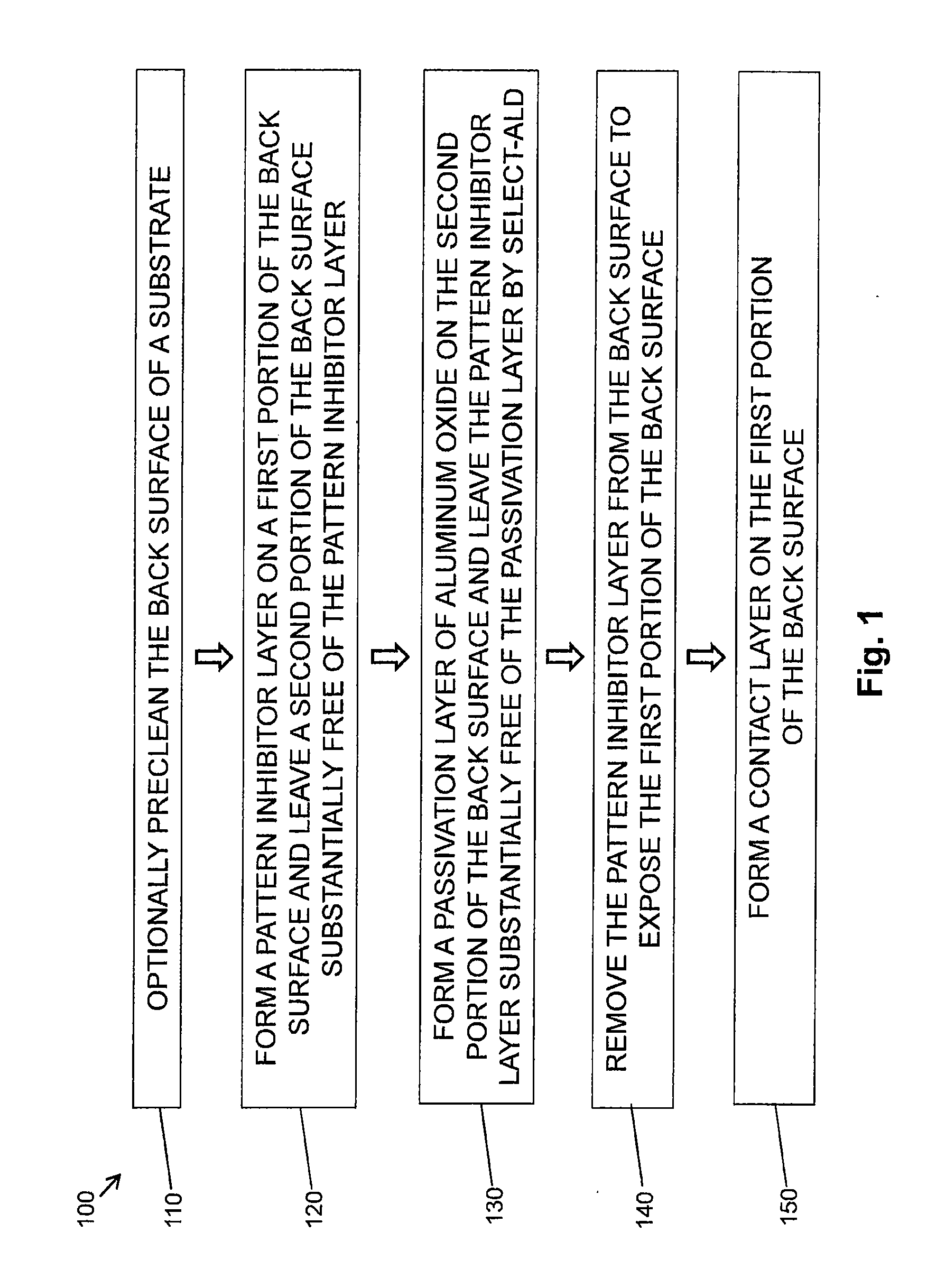Selective atomic layer deposition of passivation layers for silicon-based photovoltaic devices
- Summary
- Abstract
- Description
- Claims
- Application Information
AI Technical Summary
Benefits of technology
Problems solved by technology
Method used
Image
Examples
Embodiment Construction
[0024]Embodiments of the invention generally relate to methods for fabricating photovoltaic devices, and more particularly relate to a dielectric passivation and metallization process sequence that includes a selective atomic layer deposition (S-ALD) process utilized to form a passivation layer on the back surface of a silicon-based substrate. The passivation layer is deposited or otherwise formed on selective areas of the back surface of the substrate by the S-ALD process, and subsequently, a metallization contact layer is directly formed on the non-passivated area on the back surface of the substrate. Prior to depositing the passivation layer, a pattern inhibitor layer is printed or otherwise formed on the back surface of the substrate. The pattern inhibitor layer covers a first portion of the back surface and a second portion of the back surface remains substantially free of the pattern inhibitor layer. Thereafter, during the S-ALD process, the passivation layer containing alumin...
PUM
 Login to View More
Login to View More Abstract
Description
Claims
Application Information
 Login to View More
Login to View More - Generate Ideas
- Intellectual Property
- Life Sciences
- Materials
- Tech Scout
- Unparalleled Data Quality
- Higher Quality Content
- 60% Fewer Hallucinations
Browse by: Latest US Patents, China's latest patents, Technical Efficacy Thesaurus, Application Domain, Technology Topic, Popular Technical Reports.
© 2025 PatSnap. All rights reserved.Legal|Privacy policy|Modern Slavery Act Transparency Statement|Sitemap|About US| Contact US: help@patsnap.com



